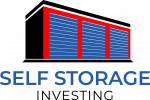In the dynamic world of self storage investing, understanding and monitoring the right metrics is crucial for evaluating performance, guiding strategic decisions, and driving growth. While financial statements provide a snapshot of your business’s overall health, digging deeper into specific metrics can offer actionable insights. Here are the essential metrics self storage business owners should track to measure success and growth effectively.
1. Occupancy Rates
The Heartbeat of Your Facility
Occupancy rate, the percentage of rented storage units out of the total available, is a fundamental metric for any self storage business. It directly reflects the demand for your services and influences revenue streams. A high occupancy rate indicates strong demand and efficient operations, while a low rate could signal a need for marketing efforts or competitive adjustments.
How to Improve: Enhance your online presence, offer promotions, and ensure your facility stands out in terms of security, customer service, and convenience.
2. Average Rental Rates
Maximizing Revenue per Square Foot
The average rental rate per square foot is a critical metric for assessing how much revenue your storage units generate relative to their size. It provides insights into pricing strategy effectiveness and market positioning. Regularly comparing your rates to local competitors can help you find the sweet spot between maximizing income and maintaining high occupancy.
How to Improve: Regularly adjust pricing based on market demand, offer tiered pricing for different unit sizes or amenities, and consider value-added services to justify premium rates.
3. Customer Acquisition Cost (CAC)
Understanding Marketing Efficiency
CAC measures the cost associated with acquiring a new customer, encompassing all marketing and sales expenses. It’s crucial for evaluating the efficiency of your marketing strategies and ensuring that you’re not overspending to attract new tenants. A lower CAC indicates a more efficient acquisition process, while a higher CAC suggests the need for strategy optimization.
How to Improve: Optimize your marketing channels, focus on high-return strategies like SEO and referrals, and streamline the sales process to reduce costs.
4. Customer Lifetime Value (CLTV)
The Long-Term Value of Customer Relationships
CLTV predicts the total revenue a business can reasonably expect from a single customer account throughout their relationship. It’s a powerful metric for understanding the long-term value of keeping your customers happy and can guide decisions on customer service and retention strategies. Increasing CLTV not only boosts revenue but also enhances overall business sustainability.
How to Improve: Implement loyalty programs, engage with customers through regular communication, and provide exceptional service to encourage longer stays.
5. Net Promoter Score (NPS)
Gauging Customer Satisfaction and Loyalty
NPS measures customer satisfaction and loyalty by asking how likely they are to recommend your business to others. It’s an excellent indicator of your facility’s reputation and can predict future growth potential. A high NPS suggests that your customers are happy and likely to bring in new business through referrals.
How to Improve: Address customer feedback promptly, create a community around your facility with events or online groups, and consistently deliver on your promises.
6. Profit Margins
Keeping an Eye on the Bottom Line
Profit margins, both gross and net, are essential for understanding how much of your revenue translates into actual profit after accounting for costs and expenses. Healthy profit margins indicate operational efficiency and financial health, enabling reinvestment in the business and cushioning against market fluctuations.
How to Improve: Review and optimize operational expenses, consider energy-efficient solutions to reduce utility costs, and regularly reassess vendor contracts for better rates.
Conclusion
Tracking these metrics provides a comprehensive view of your self storage business’s performance and growth potential. By focusing on occupancy rates, rental rates, CAC, CLTV, NPS, and profit margins, you can make informed decisions that drive success and sustainability. Remember, the goal is not just to grow but to grow wisely, ensuring that every aspect of your business is aligned with long-term success.





